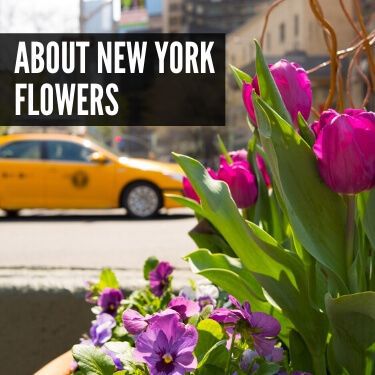Shipping plants, like greenhouse flowers, can be a stressful process. With many factors to be aware of, like the time of year, the weather, and legal regulations, you could end up with a truckload full of wilted plants before you get them to the destination! Thankfully, with the right planning and careful execution, you can ship even the most delicate flowers over long distances.
Shipping plants requires careful preparation to make sure they stay healthy during the trip. They should be kept at a consistent temperature to prevent damage to the leaves, and there should be enough moisture to keep the plants alive if they are being shipped a long distance. Other factors to be aware of are the packing methods, the timing of the delivery, and the weather outside.

New York is famous for its colorful gardens and seasonal flower festivals that attract thousands of visitors each year. Gardeners from all over the state participate in events like flower displays, competitions, and various other festivities that brighten up the streets with colorful blossoms. Many festivals also include live music, craft booths, and food and wine tastings, but the flowers always take the center-stage.
For people wanting to bring some bright flowers home to their own gardens, it’s easy to get a few potted plants at their local hardware or home store. However, for companies shipping those New York Flowers to retailers, the process is hardly simple. When shipping across state lines, that process only gets more complicated.
Learn more about shipping freight from New York.
As you can imagine, there are strict regulations regarding the shipping of plants around the world. But, did you know that the regulations for shipping live plants from one U.S. state to another are also strict? You can even find yourself in serious legal trouble if you try to ship live plants to a neighboring state without following all the appropriate regulations.
Each state is going to have different regulations regarding the shipping of live plants. To make sure you are compliant with your state’s laws, contact your state’s department of natural resources. There are, however, a few regulations that are more universally applicable to all states.
The most important thing to be aware of when transporting plants is the spread of invasive species. This is especially true for plants moving from the North-Eastern states like New York, New Jersey, and Massachusetts, where the Gypsy Moth has infested. Gypsy Moths are terribly destructive to plants, and their lack of natural predators in the U.S. allows them to reproduce to unmanageable numbers.
To prevent the spread of Gypsy Moths across the nation, the United States Department of Agriculture (USDA) dictates that any plants moving from a state infested with Gypsy Moths must be inspected prior to transportation. In addition, plants moving over state lines should be transported in sterile potting soil to curb the spread of other harmful pests, bacteria, and fungi.

Flowers are a delicate commodity, and they tend to be unforgiving if the conditions they are kept in become unfavorable for even a short period of time. A few minutes in a sweltering truck can effectively destroy the thin petals on any flowering plant, and a lack of humidity can leave your plants looking crisp. To avoid catastrophe, it is important for you to understand how to keep your plants healthy during shipment. You can prevent damage to your plants by packing them properly, and by informing your carrier of what needs to be done to maintain their quality.
There are several ways of packaging plants into a freight truck safely, but the choice you make is going to depend on the kind and number of plants you are shipping. A few of the most common ways are:
Although a palletized shipment is the easiest for the carrier to handle, it likely won’t be the best option for your freight. However, depending on the hardiness of the plant and the distance it has to travel, it could be a viable option to save you some time and money.
In addition to the plants themselves, the truck may need to have a few adjustments made to it before it is suitable for the job. It must have what is known as “E-trac strips” installed, which are metal tracks that go from the front of the trailer all the way to the back. They are used to fasten the cargo to the walls of the container, to prevent shifting and damage.
Most of the time, a regular cargo truck works just fine for transporting delicate greenhouse flowers and plants. However, the metal roof of a shipping container can get quite hot in the sun, and that can raise the temperature inside the container. That can be remedied with a simple barrier of plywood, styrofoam, or a plastic tarp applied to the roof of the container.
If the temperature outside is too extreme for the plants, then you may need to use a temperature-controlled truck instead.
Plants need water to stay healthy during long trips. There are a few ways that the humidity can be maintained to ensure healthy plants. Those options are:
If you are shipping plants only a short distance, watering them a day or two in advance will be all that is necessary to maintain the correct moisture level for the trip.
If you are shipping plants from a greenhouse, then the temperature outside might be wildly different from what the flowers need to thrive. Wait for a good forecast before shipping your plants to ensure that they have the best chance of survival.
It is also a good idea to ship early in the week, so that the shipment doesn’t arrive on a weekend or when the receiver is unable to take the shipment. If the location you are shipping to is open on weekends, then the timing is not as important of a factor.
If you are shipping plants and greenhouse flowers across state lines, trust R+L Global Logistics to be your shipping partner! We have a huge network of thoroughly vetted carrier partners that can offer you the best in logistics services. If your shipment needs special attention, you can count on us to be attentive to your cargo to ensure it reaches its destination safely. If you need refrigerated shipping, expedited delivery, or white-glove services, we can offer all that and more.
Contact us today for a freight rate quote!
R+L Global Logistics
315 NE 14th St., Ocala, FL 34470